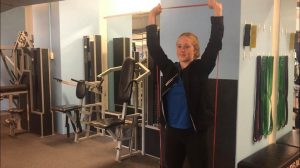Autism and Exercise
Autism Spectrum Disorder is a disability that Longevity Exercise Physiology Drummoyne, Edgecliff, Marrickville, Bella Vista, Randwick, Lindfield and Balmain helps on a daily basis. In today’s blog, we discuss what it is, how exercise can help and what the exercise recommendations are for someone with Autism.
Firstly, what is Autism?
Autism is a developmental disorder that affects communication and behaviour.
It is called a “spectrum” disorder because there is a wide variety in the severity of symptoms people may experience. Common symptoms of Autism are difficulty with social communication and interaction, restricted interests, and repetitive behaviours.
Fundamental movement skills such as balance, walking and catching can also be more challenging for those with Autism and this can contribute to a greater percentage being physically inactive. Another factor resulting in decreased physical activity is the reduced ability to self-motivate or understand the importance of exercise.
Autism is a lifelong condition. Exercise, however, has a big impact on ensuring people can live independent, productive, and fulfilling lives.
How can exercise help?
Exercise has been shown to help:
- Regulate emotions, improve attention, reduce repetitive behaviours, and increase social communication skills.
- Improve fundamental movement skills such as running, jumping, skipping and catching.
- Decrease the frequency of common behaviours such as body rocking, head-nodding, toe walking and object-tapping.
This leads to greater independence with daily tasks, self-esteem, maintaining a healthy weight and reduces the risk of developing secondary health conditions such as heart disease, diabetes, and obesity.
What are the exercise recommendations for Autism?
The exercise recommendations for those with Autism is to follow the Australian Physical Activity guidelines specific to the age of the person. For example, someone aged between 5-17 years, should be accumulating a minimum of 60 mins of physical activity per day and performing activities that strengthen muscles and bone on at least 3 days per week.

Why see an EP?
Exercise can be more difficult for those with Autism for a variety of reasons such sensory challenges, differences with information processing, lack of confidence, coordination or proprioception difficulties (perception or awareness of the position and movement of the body).
Benefits:
- Improved social skills by engaging in conversation with someone outside the family and teaching them about what exercises they are doing and why they are doing them.
- Creates routine and structure e.g. training at the same time each week.
- Time and patience to allow for adaptations and learning.
- Exercise physiology services delivered by an AEP can also be funded by the NDIS, under ‘Capacity Building – Improved Health and Wellbeing’ and ‘Capacity Building – Improved Daily Living Skills’.
At Longevity, our EP’s see many people with Autism from children to older adults and we have the expertise to prescribe appropriate exercise that understands the barriers and provides a safe and tailored exercise environment. Contact Longevity Exercise Physiology Drummoyne, Edgecliff, Marrickville, Bella Vista, Randwick, Lindfield and Balmain today on 1300 964 002 to find out how we can help.
Written By Courteny Maher

